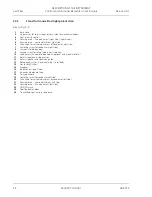Reviews:
No comments
Related manuals for Axio Lab.A1

BMS C1 series
Brand: BMS Pages: 20

Slit Lamp SL-2G
Brand: Topcon Pages: 44

3055
Brand: Accu-Scope Pages: 4

Anyty 3R-VIEWTER-500IR
Brand: 3R Pages: 38

Science ADL-601P
Brand: Bresser Pages: 16

BioScience
Brand: Bresser Pages: 16

junior 40x-2000x
Brand: Bresser Pages: 48

OPMI 1 FR pro
Brand: Zeiss Pages: 6

JSM-6390 LA
Brand: JEOL Pages: 68

CK2
Brand: Olympus Pages: 15

4083.2
Brand: Optika Italy Pages: 28

MM8044C
Brand: Kontiki Pages: 10

Mic-Fi Series
Brand: ITALECO Pages: 38

FEDMED100
Brand: ITALECO Pages: 66

591178
Brand: Wolfe Pages: 5































